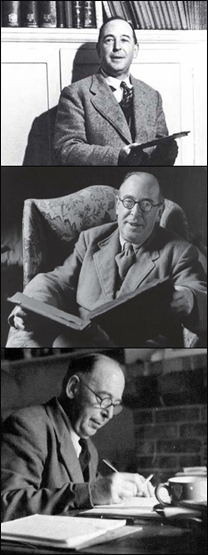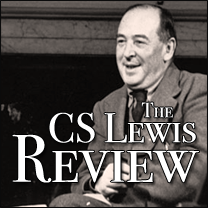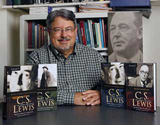
The Countdown: Narnia Unveiled
December 2nd, 2005 | Skip to comments
One week to go, and the press is being unusually cooperative and respectful of the incoming cultural missile known as Andrew Adamson’s The Lion, the Witch, and the Wardrobe. (I mean “the press” excluding The New York Times and the The New Yorker–and all the non-Rupert Murdoch newspapers in London and Sydney, of course.)
Today’s (Dec. 2) USA TODAY carried a balanced cover story on Narnia by Erik Brady (ok, yes, they quoted me) and The Chronicle of Higher Education’s December 2nd issue carried an unusual, full-length rebuttal to Philip Pullman’s ongoing viciousness about Narnia. PBS has done a commendable job of introducing and profiling Lewis to readers and viewers (especially impressive is Alan Jacobs’ participation.) And new story angles are emerging–like the publication of a note capsuling Lewis’s fear that animated or cinematic versions of Aslan would be blasphemous. So lots to comment on, plus Christianity Today’s listing of top Narnia/Lewis books of the year. Let’s get started.
THE PRESS
I think there is a sense that mainstream (i.e., non-coastal media outlets) want to get behind something that the public wants to like and embrace; most of the vitriol has flowed from the usual suspects. Hence, my 50-something interviews with various newspapers from Omaha to Tampa have convinced me that reporters want to generate generous stories that try to articulate the multi-layered appeal of Narnia (Christians, fantasy-fans, and non-religious folk can agree–it’s a great tale) and the enduring legacy of Lewis (despite his quirkyness, Jack is someone just about everyone can [and should] “like.”). What movie reviewers will do is something else, of course, and no amount of piety or lack thereof (I admired Roger Ebert’s against-the-grain, stalwart defense and undisguised affection for The Passion of the Christ) can redeem a movie that is not well-made. But every indication we have is that Adamson has delivered to us a wonderful, creative, “indigenous” Narnia, created out of his childhood imagination and not for adult literary critics with all sorts of -isms in mind to validate. Hurrah!
THE CHURCH
Let’s hope that in its enthusiasm for a wholesome and Christ-centered tale, the church does become so overbearing (everyone should discover or rediscover the late Joseph Bayly’s parable, The Gospel Blimp, for an object lesson in trying too hard) that it deters people from viewing the movie for fear they are attending either a tedious sermon or a boring lecture on symbolism. (Almost every interview I have granted has in one way or another started with a variation of, “So, tell me about the hidden meanings of Narnia. . .”) That is part of “the buzz” surrounding the movie’s release: “what did you know and when did you know it–about Narnia?” When you think of it, that is a very unusual combination of bated breathless anticipation and self-fulfilling prophecy. I do not think the movie can fail if Andrew Adamson did indeed make it with his 9-year-old imagination intact and his adult cinematic skill set. So, church, relax. Lewis’s winsome and glorious vision will come through.
JACK AND THAT LETTER
Making the rounds as a “new angle” is this letter Lewis put on the back of a postcard to BBC producer Lance Sieveking, who was interested in creating a television version of The Magician’s Nephew. (I read this note this past Spring at the Wade Center, the wonderful collection of Lewisian materials in Wheaton, Illinois.) Lewis said absolutely not, that the radio broadcast was quite enough, worrying that a TV Aslan would look like a tame pantomime–a “two men in a horse suit” kind of look, not unlike the one Shift concocts in The Last Battle. (Now, if he had seen the BBC TV version that eventually got made in the 1980s, and shown in the US as a “Wonderworks” broadcast, I am sure he would have felt justified.) But that was then and this is now. And even the Disney Co. at which Lewis demurred in his expressed disappointment with Fantasia has far surpassed itself in creative and evocative skill since then, even in losing Pixar. So I don’t for a minute believe that if Lewis saw this Narnia that he would find it “blasphemous” or in any way dismissive of the imagination or his own dreams.
I do think he would recognize the two experiences–cinematic and literary–as two distinct kinds of aesthetic epistemologies (see my argument about the movie Serenity and my surmising that Lewis would have liked it); and, of course, they are. But as cinematic prowess and narrative control continues to accrue to individuals like you and me (insuring the possibility of “intentional authorship”), the process itself yielding to the individual moviegoer/maker the way the constructing of books and stories yields to writers and readers (imagine doing what you can now do at your desktop or mine with Photoshop, iMovie, and a digital camera compared with even five years ago), some of our worries over “ruining Narnia” can be relieved. Displacing Narnia, now that is a distinct challenge, but then no self-respecting lover of any well-loved book that I have known ever believes that a movie version can improve upon or erase the pleasure and purpose in what Lewis called the first reading of a momentous work. Adamson’s Narnia is different from Lewis’s Narnia–and from mine. And that is the way it should be.
THE BOOKS
I am happy that Jerry Root listed two of my Narnia books among his favorites for the December issue of Christianity Today, but let me list my top three Narnia books. Each of them does something different, compelling, and insightful; and thus all are worth having in your library simultaneously:
- Alan Jacobs’ The Narnian. Alan is a terrific writer and puts his heart, soul, mind, and strength into this “biography of Lewis’s imagination.” Until the definitive, multi-volume bio-critical treatment of the breadth and depth of Lewis’s life, times, and works comes along, we won’t find anything better than this.
- David Downing’s Into the Wardrobe. David is, to me, Lewis’s most consistently eloquent expositor and contextualizer. He does for Narnia, here, what he has done previously for the Space Trilogy.
- Leland Ryken and Marjorie Lamp Mead’s A Reader’s Guide Through the Wardrobe. Leland and Marjorie are keen practitioners of what I am fond of calling these days, “indigenous scholarship.” They have been to Narnia, and thus can speak of it as natives not aliens, and that makes all the difference.
NEXT UP
I will talk to you next on Thursday at midnight, when I post my Narnia movie review. Don’t worry–I will pre-label any spoilers.
If there are any Cincinnati readers, I will be speaking three times this weekend in your region:
Trinity Lecture Series (Trinity Reformed Episcopal Church; 5920 Butler-Warren Rd., Mason, OH 45040). I will be speaking twice at the church facility (Fri., Dec. 2nd, 7PM; Sun., Dec. 4, 9:30AM) and at a special book-signing event at the Barnes and Noble Bookstore (Sat., Dec. 3rd @ 7PM; 9455 Civic Centre Blvd; West Chester, OH 45069; 513-755-2258)




Comments
No comments yet.
RSS feed for comments on this post.
Sorry, the comment form is closed at this time.